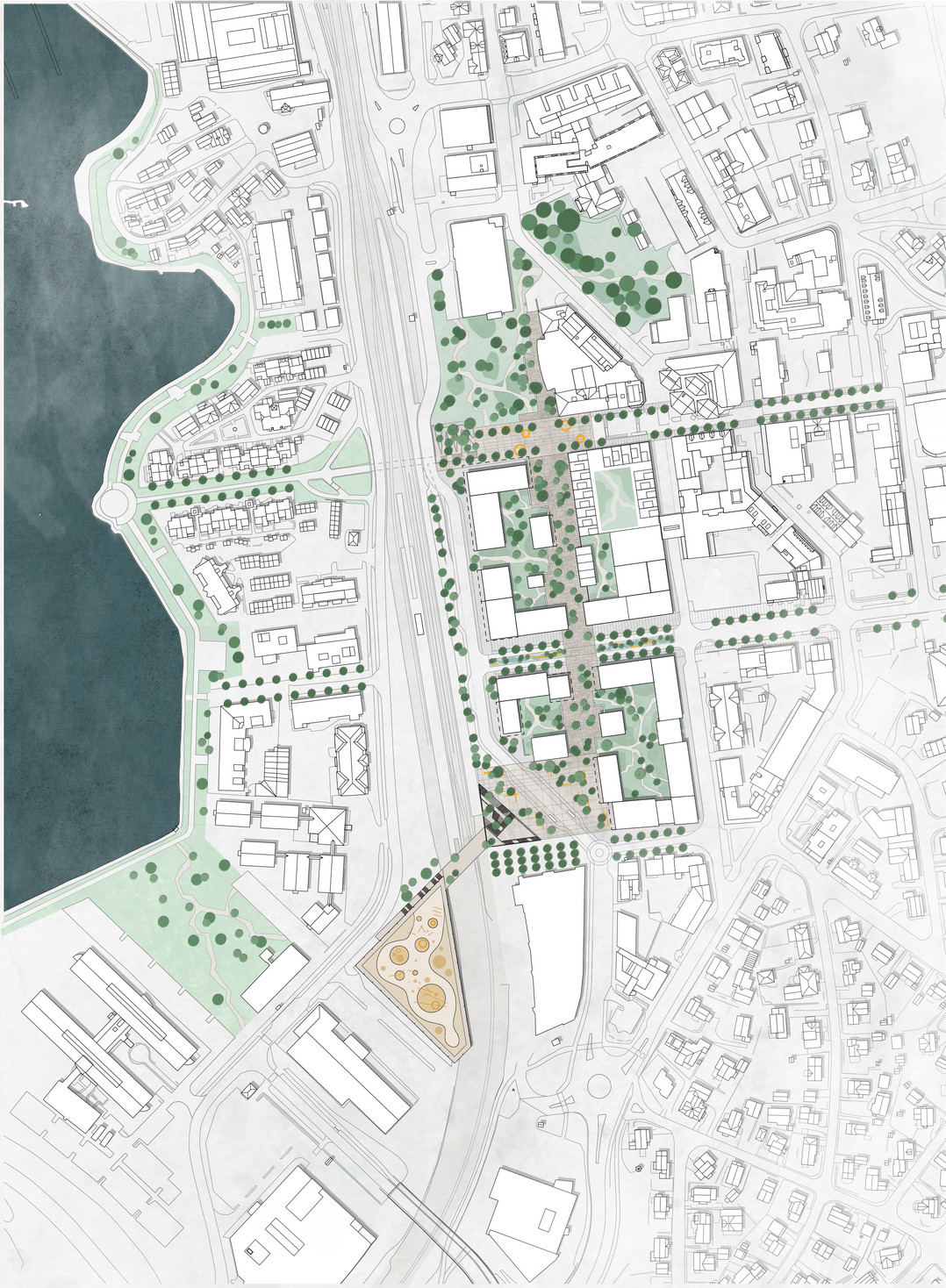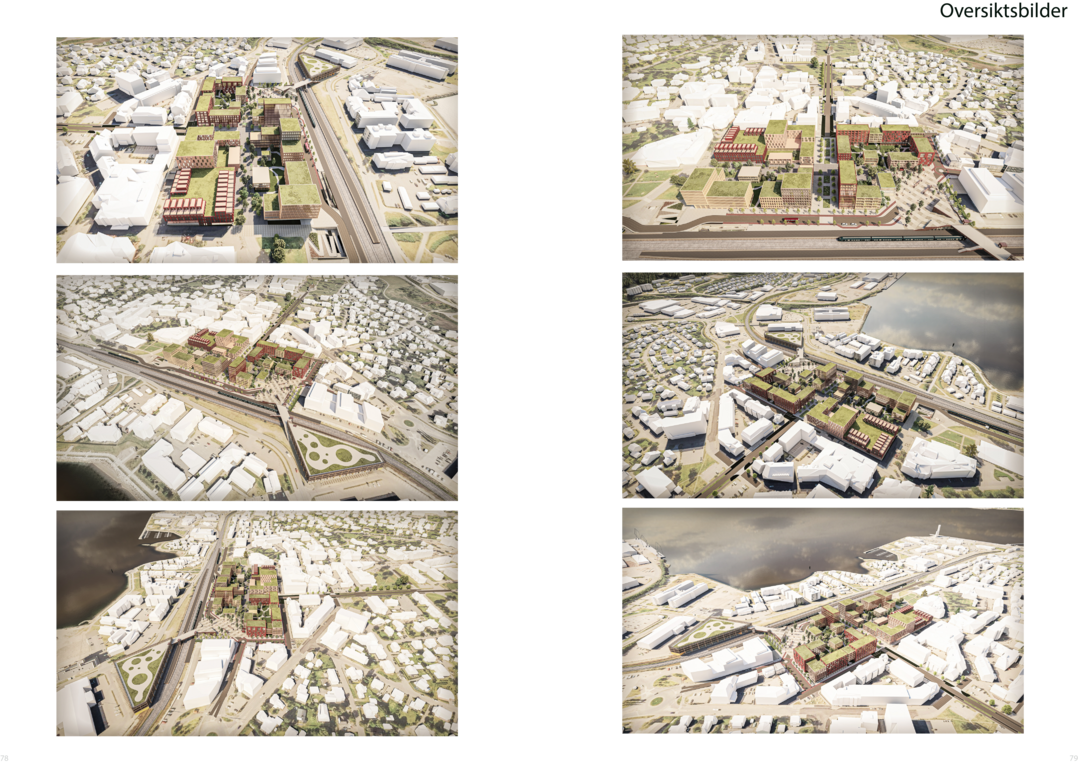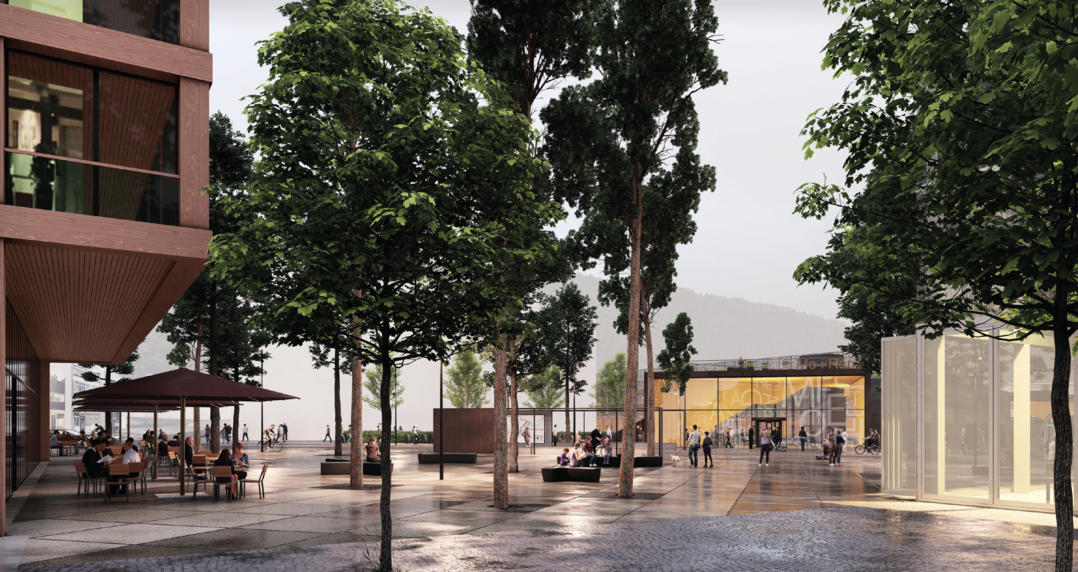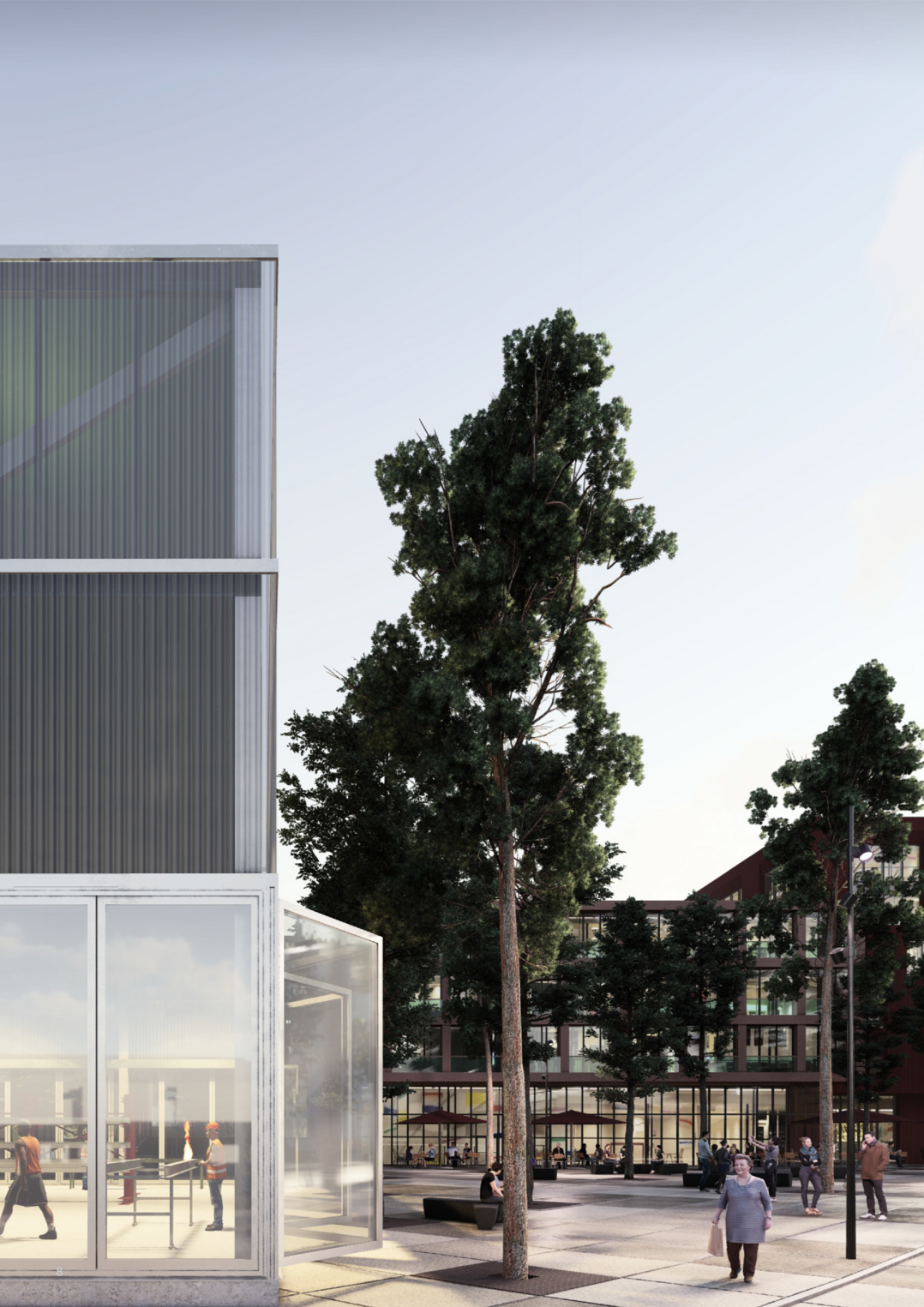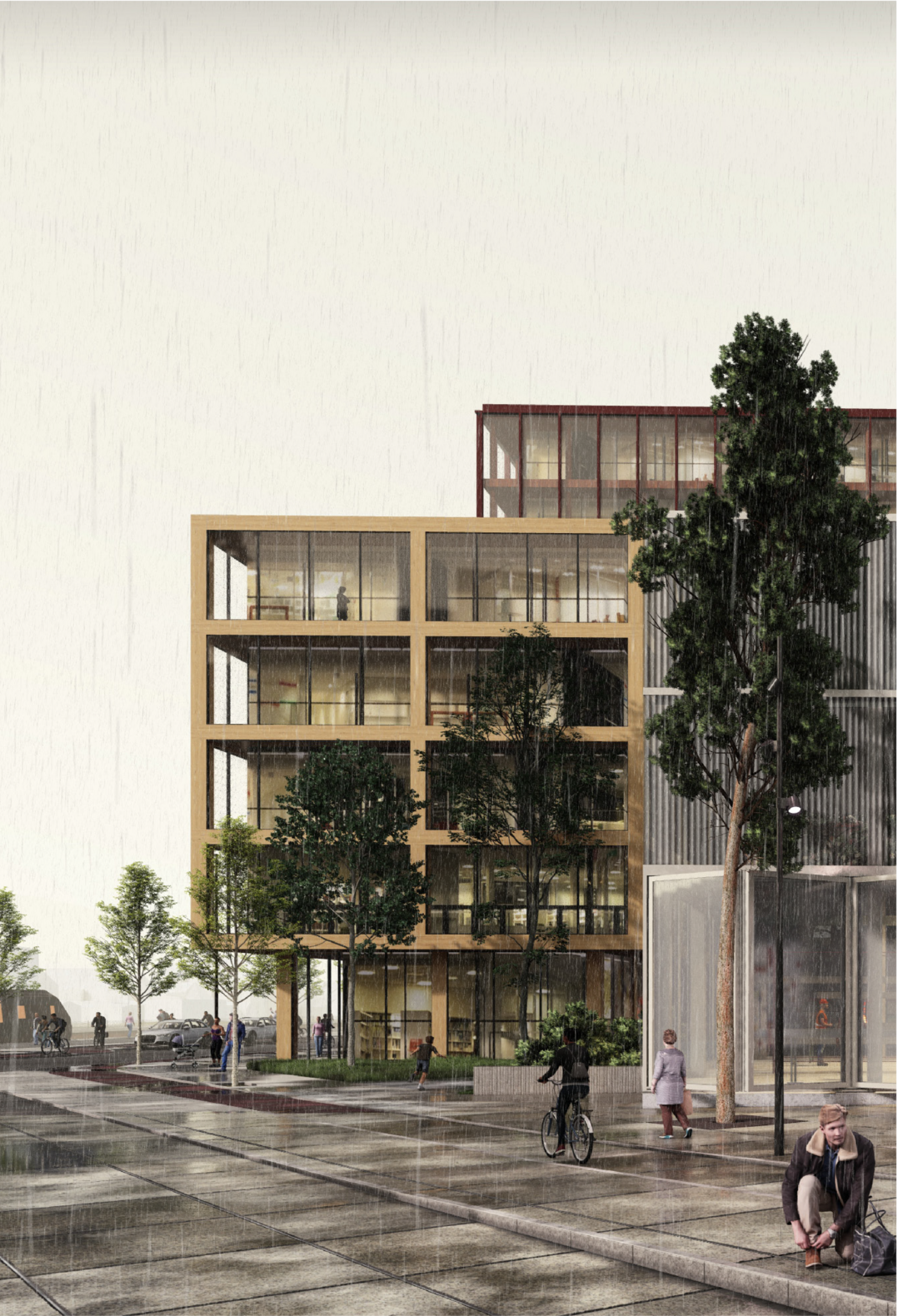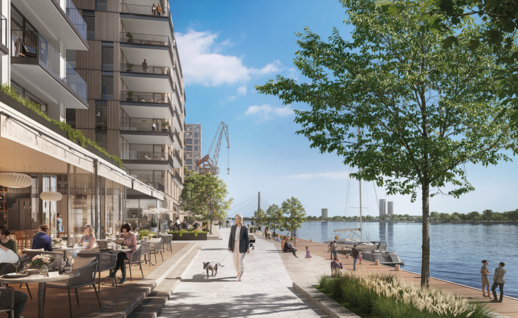Mo i Rana station area: Hub and urban development
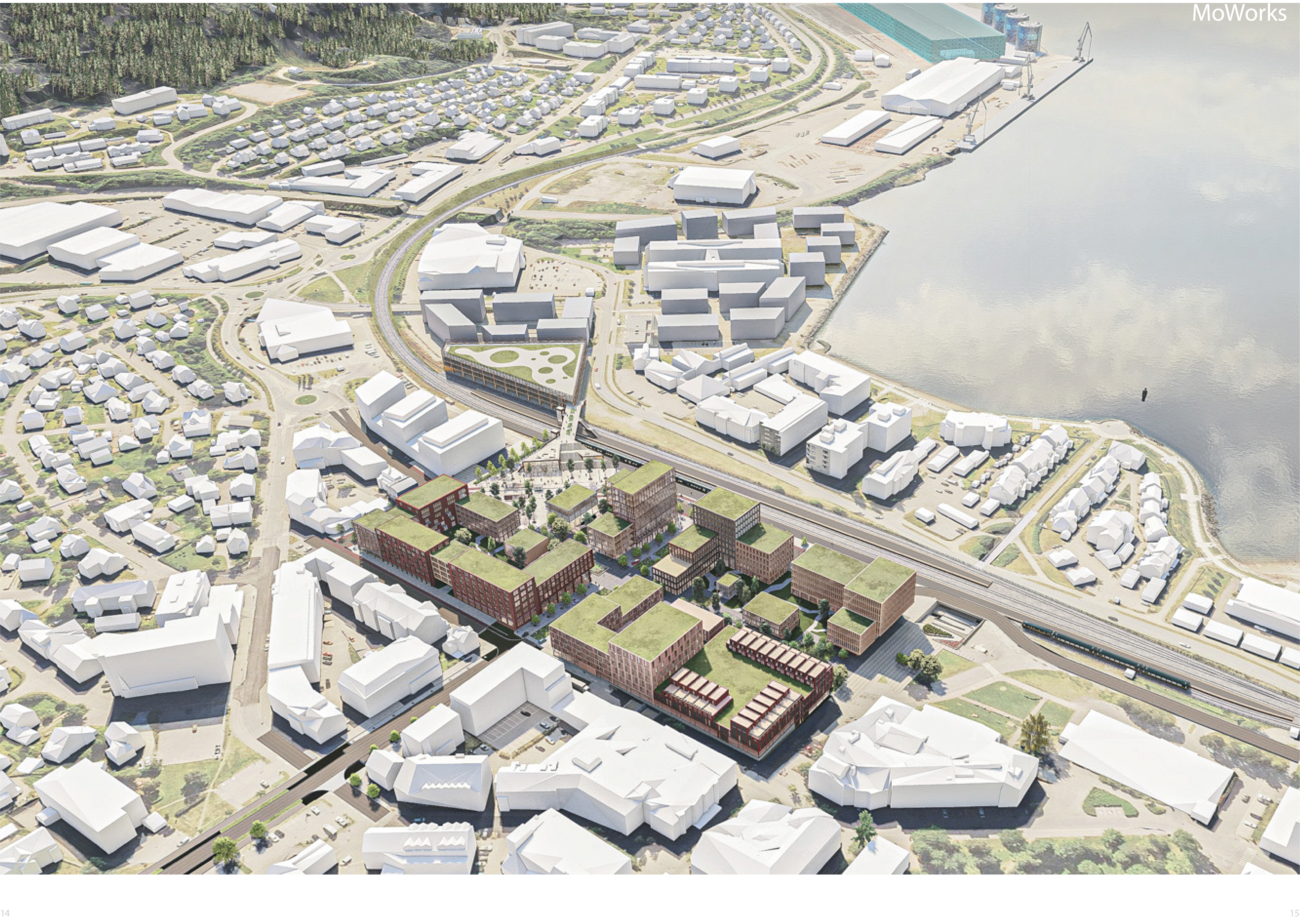
Info
Description
A modern industrial city in a small town scale
We propose a development that enhances Mo i Rana’s existing qualities: Culture, local history and its small-town scale combined with exploiting the potential of the city’s unique location by the Rana Fjord.
Between the tamed and wild
The project draws inspiration from Mo i Rana’s history and past urban planning. In the 1920s, Sverre Pedersen created a futuristic urban plan with a grid structure and axes. These axes will be retained, and the urban spaces that lie in extension of the city’s axes are characterised by a linear - and tamed - design with rows of avenue trees. Today’s Mo i Rana began as a fishing village. This organic village setting persists in the new plan with urban spaces with a variety of green structures. Plant beds and different species of trees in varying sizes are spread out without a specific pattern, creating a constantly changing and wild atmosphere.
Removing the everyday necessity of cars
The station area and city centre will be designed to be partially car-free. Parking will be consolidated in a mobility building close to public transport options, creating room for urban life and nature rather than parked cars. The everyday need for cars will be reduced, as everyday activities such as shopping, school, visiting museums, etc. will be within biking and walking distance. At the same time, the layout will further prioritise bicycle and walking connections to stations and bus stops. The path connections will be designed to be intuitive for vulnerable road users and work on their terms.
The world’s greenest industrial city
Mo i Rana will develop in the direction of a modern industrial city characterised by technological progress, the circular economy and the green transition. These trends not only influence which industries the city has and attracts, but also what people will do for a living in Mo i Rana’s future. They also affect the city’s facilities, perhaps especially in terms of mobility, where technological advances help ensure better utilisation of infrastructure and influence travel habits and behaviour.
